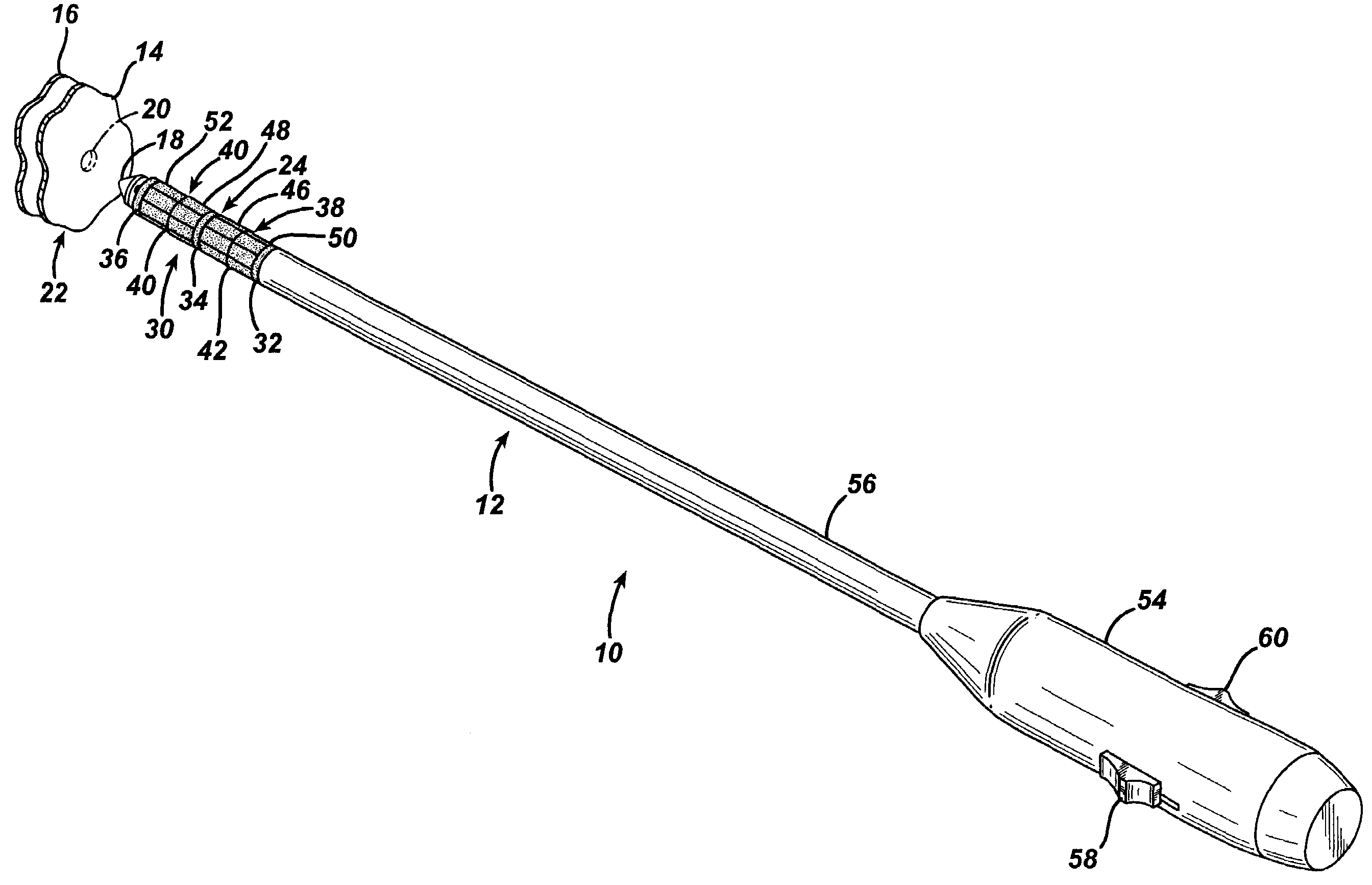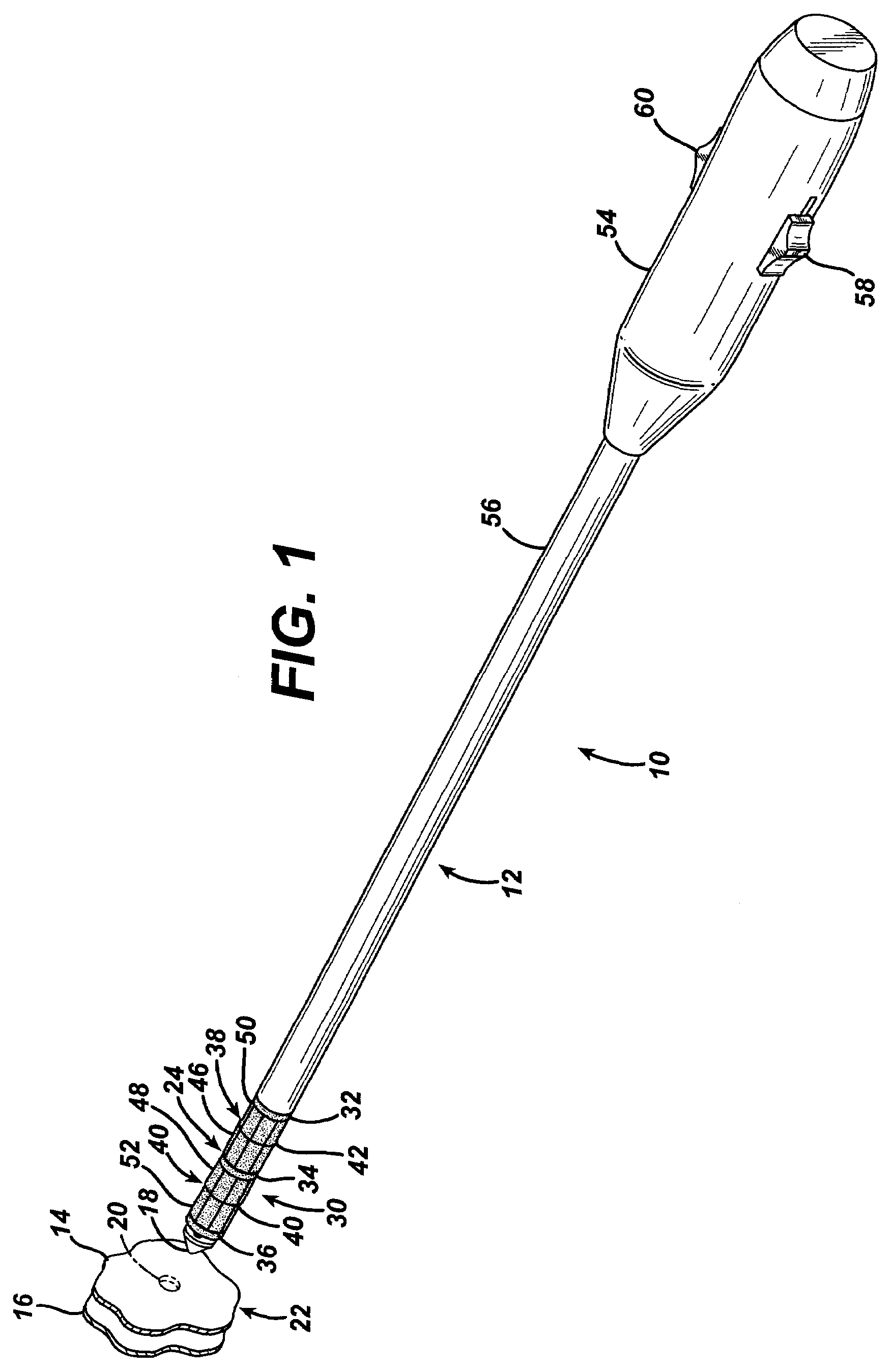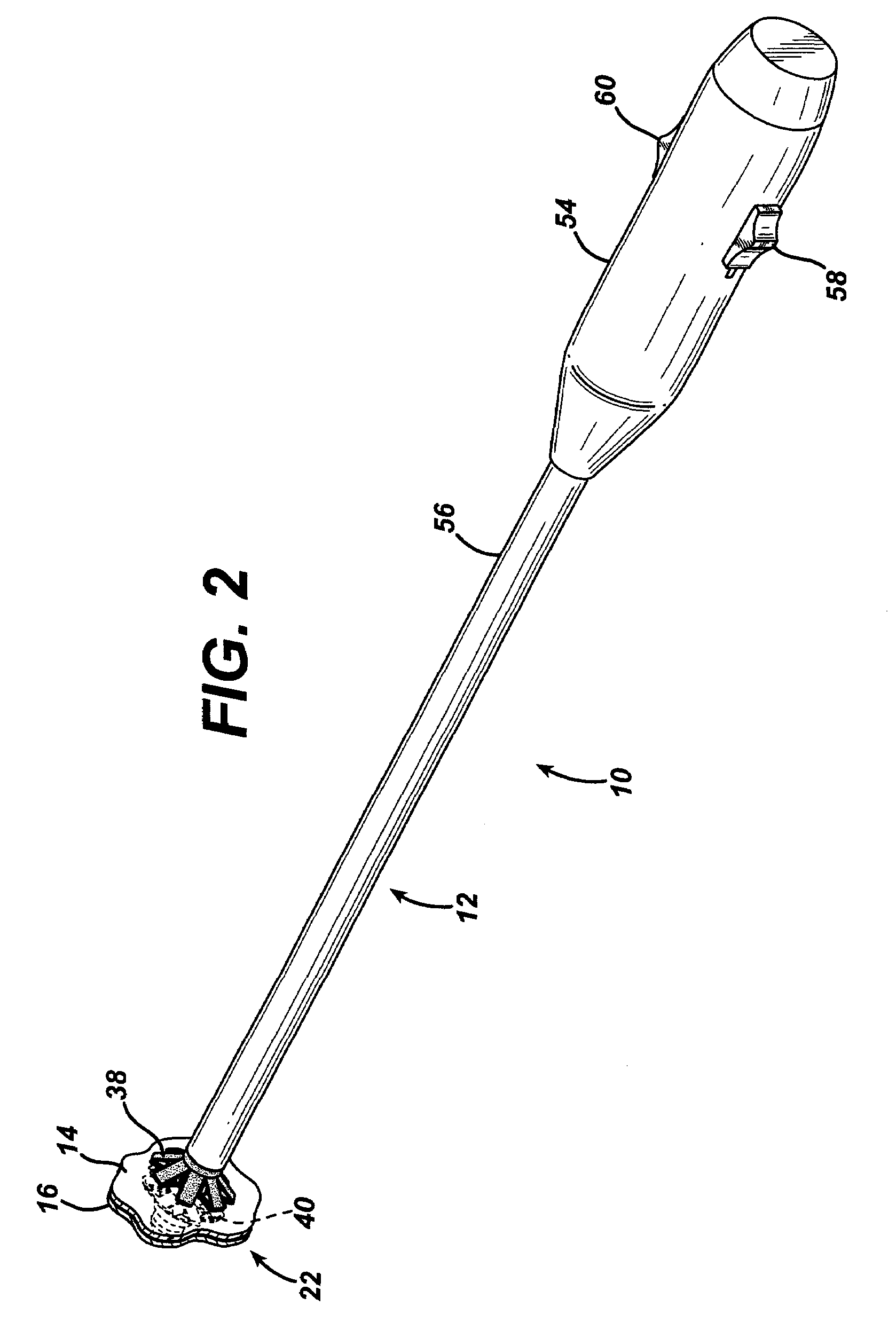Applier for fastener for single lumen access anastomosis
a single-lumen, anastomosis technology, applied in the field of anastomosis devices, can solve the problems of increasing the risk of heart disease, stroke, diabetes, pulmonary disease, etc., and numerous non-operative therapies for morbid obesity have been tried with virtually no permanent success, and the condition has not been corrected. , to achieve the effect of simplifying the positioning of the two lumens to be anastomosized and enhancing control
- Summary
- Abstract
- Description
- Claims
- Application Information
AI Technical Summary
Benefits of technology
Problems solved by technology
Method used
Image
Examples
Embodiment Construction
[0029]Turning to the Drawings, wherein like numerals denote like components throughout the several views, FIG. 1 depicts an applier 10 having an elongate implement portion 12 dimensionally sized for insertion through a cannula of a trocar or laparoscopic port to tissues walls 14, 16 to anastomose two lumens. A distal introducer tip 18 of the applier 10 pierces through an opening 20 at an anastomosis site 22 to position an actuating portion 24 that holds a ring device 30 for single lumen anastomosis.
[0030]The ring device 30 has three primary rings, depicted as a proximal ring 32, a center ring 34, and a distal ring 36, that are cylindrically aligned with one another. The proximal ring 32 is longitudinally attached to the center ring 34 by proximal arms 38, which in turn is longitudinally attached to the distal ring 36 by distal arms 40. Each proximal and distal arm 38, 40 is bisected respectively by a hinged joint 42, 44 defining an inner arm segment 46, 48 also hingedly attaching to...
PUM
 Login to View More
Login to View More Abstract
Description
Claims
Application Information
 Login to View More
Login to View More - R&D
- Intellectual Property
- Life Sciences
- Materials
- Tech Scout
- Unparalleled Data Quality
- Higher Quality Content
- 60% Fewer Hallucinations
Browse by: Latest US Patents, China's latest patents, Technical Efficacy Thesaurus, Application Domain, Technology Topic, Popular Technical Reports.
© 2025 PatSnap. All rights reserved.Legal|Privacy policy|Modern Slavery Act Transparency Statement|Sitemap|About US| Contact US: help@patsnap.com



